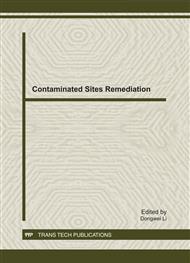p.16
p.22
p.27
p.32
p.39
p.45
p.51
p.56
p.63
WEEE Management in Chongqing, China: Status and Strategies
Abstract:
This paper presents an examination of the current possession of electrical and electronic equipment (EEE) and predicted amount of waste electrical and electronic equipment (WEEE) in Chongqing. The results indicate that: the total EEE possession amount has reached a total of 287.73 million units in 2009; and the overall evaluated generation of WEEE from 2011 to 2015 would reach 13.53 million units, of which 19% are personal computers, 24% air conditioners, 7% refrigerators, 38% color TVs, and 12% washing machines, respectively. The recycling capacity is also investigated, evincing that about 952,000 waste units were recycled in 2009. There are three officially approved corporations for dismantling WEEE in 2010, with the dismantling capacity of 1,600,000 units per year. Moreover, several disposal facilities have been under construction and expect to be accomplished in 2015. This paper also proposes a number of recommendations aiming to improve the WEEE management system. For better management, it is necessary to arouse the public recognition of the need for formal processing of WEEE as well as to implement EPR approach, license system, and deposit-refund system.
Info:
Periodical:
Pages:
39-44
Citation:
Online since:
December 2011
Authors:
Price:
Сopyright:
© 2012 Trans Tech Publications Ltd. All Rights Reserved
Share:
Citation:


